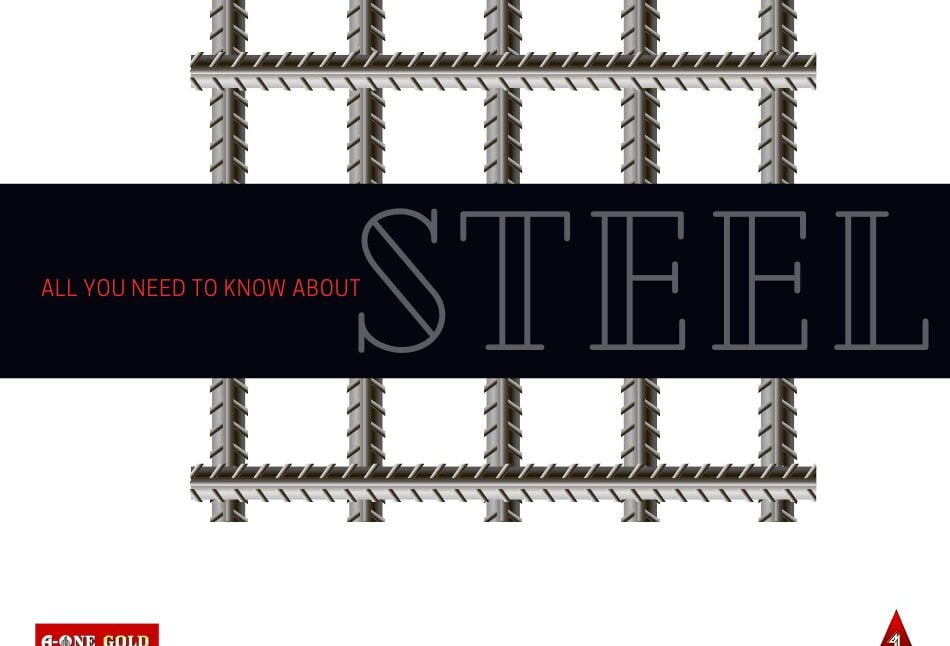What is Steel? Steel, an alloy of iron and carbon, contains less than 2% carbon and 1% Manganese. It also has small amounts of Silicon Phosphorus, Sulphur, and Oxygen. Everything from our cars, washing machines, cargo ships and surgical scalpels requires Steel. The reason that makes this metal so popular is the world-class properties of steel.
Production of Steel
Steel is produced mainly in two ways. There are two main routes for making Steel: Blast Furnace Basic Oxygen Furnace Route and Electric Arc Root. The type of raw materials consumed for the manufacturing of Steel is extreme. The commonly used components are iron ore, coal, and recycled Steel.
Almost 70% of the Steel produced using the black furnace basic oxygen furnace procedure. In this procedure, the pores get reduced to iron, also called heat metal or pig iron. Then the iron is converted into Steel in the BOF. Finally, the Steel lesson was cast, rolled, and delivered as coil plate sections and bars.
The Steel, made using the EAF procedure, uses electricity to melt the recycled Steel. Then, various alloys are added to the required components and match the chemical composition.
Steel products remain in use for decades before they are needed to be recycled. Hence, recycled Steel is not enough to meet the growing demand for Steel. Consequently, most of the Steel contains recycled steel scrap as an input.
Read: Why choose A-One Steel Group for your next construction project
Properties of Steel
Various kinds of Steel based on different physical, chemical, and environmental properties exist. More than 3500 different grades of Steel prevail in the market today. But majorly, there are four broad categories of Steel namely carbon steel, tool steel, stainless Steel, and Alloy Steel.
The majority of the Steel produced is carbon Steel. Tools Steels are used only for developing various machine parts and tools. Most of the everyday household items consist of Stainless Steel composed of 10-20% chromium which offers corrosion resistance. Alloy Steel consists of various components such as iron, carbon, silicon, nickel, manganese, and copper. In twenty years, the development of 70% of modern Steel has occurred. Modern Steels are 35% lighter than the Steels used in the past. The world crude steel production reached 1808.6 million tons in 2018.
Steel provides excellent durability as compared to any other material. It is recyclable and requires relatively low amounts of energy for production. Lightweight Steel is beneficial for saving energy as well as resources. It is environment-friendly as well as sustainable. The steel industry has made a lot of effort in the past decade to reduce dust and emissions. The steel industry has successfully modernized the procedures of producing Steel in the past couple of years. Now, it requires only 40% of the energy for production compared to the past. It is elementary to recycle Steel. Because the recovery of Steel from the waste is easy because of the unique magnetic properties of steel.
Read: Why use steel in the construction & infrastructure industry
Sustainability
Steel is a very widely used product because of its strength and durability. The key trait of Steel is its sustainability. Hence, Steel finds its usage around the globe for different manufacturing purposes. It still doesn’t lose its unique properties irrespective of the number of times it undergoes the recycling process. It finds application in the construction of buildings, stadiums, bridges, farm equipment, and tools.
Read: How A-One Steel Group has embarked on a sustainable journey
Steel Import and Export in India
India’s finished steel exports were at 10.78 million tons in 2020-21, against 8.3 million tons in 2019-20.
In 2021-22, the top sources of exports were the USA and China, while the significant origins of imports for India were China and Germany. Steel tariffs have significantly varied because of the pandemic.



